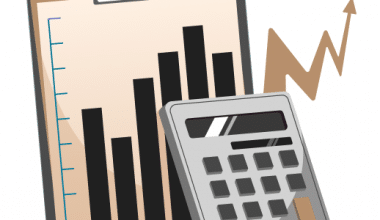Investors have had a wild ride in recent years. Consistent contributors to retirement plans, such as a 401(k), have been largely rewarded for staying the course during the COVID-19 crisis, the Russia-Ukraine conflict, and Federal Reserve interest rate hikes. While short-term market volatility is unavoidable, it is critical not to overreact to large price swings. Remember to stick to your long-term investment strategy and continue to build your retirement nest egg. Here, we’ll see what Fidelity has to say about an ideal 401k balance for every age range.
Average 401k Balance By Age
According to Vanguard, which gathered data from 5 million defined contribution plan participants across its recordkeeping business, these are the average and median balances for specific age groups at the end of 2021.
401k Balance by Age 25 and Below
- Average 401(k) balance: $6,264
- Median 401(k) balance: $1,786
The average balance for people just starting out in their careers is $1,786. That means that half of this age group’s 401(k) plan participants have less than that amount saved, while the other half have more. The average balance is much higher, skewed by those who can save more in their 401(k).
How much money should you aim to save for retirement? Fidelity, which manages employee benefit programs for over 22,000 businesses and provides a variety of financial planning services, recommends saving at least ten times your annual salary by the age of 67. Another metric that the firm advocates is: Save 15% of your pretax income from the start of your career, including any company match. So, if your employer matches 3% of your salary, you’ll need to save 12%. If current expenses preclude this option, set that amount as a target.
401k Balance By Age: 25-34
- Average 401(k) balance: $37,211
- Median 401(k) balance: $14,068
Again, the average 401(k) balance is more than twice the median balance, indicating that high-wage earners and those committed to maximizing their 401(k) plan have greater savings capacity.
Fidelity recommends that by the age of 30, you have saved the equivalent of one year’s salary in your workplace retirement plan. So, if you earn $50,000, your 401(k) balance should be $50,000 by the time you reach the age of 30.
If you’re falling behind, try increasing your contribution amount by a few percentage points while you’re still in your 30s. This is especially simple if you coordinate the increase with any raises or bonuses you receive. This way, your disposable income is not reduced. In fact, living below, rather than above, your means will help you keep your spending in check.
401k Balance By Age: 35-44
- Average 401(k) balance: $97,020
- Median 401(k) balance: $36,117
You have a lot of financial obligations in your 40s, usually a mortgage payment and possibly a family with all the associated costs. Still, it’s critical to contribute a significant portion of your income to your 401(k) in order to avoid shortchanging your golden years. Make the most of your savings opportunities while you still have about 20 years before the traditional retirement age.
Fidelity recommends saving three times your annual salary by the age of 40. That means that if you earn $75,000, your retirement account balance should be around $225,000 when you reach the age of 40.
If your company offers both traditional and Roth 401(k) plans, you may want to split your savings between the two. When you reach retirement age and begin taking withdrawals, you must pay tax on money taken from a traditional 401(k), but not from a Roth, because it is funded with after-tax contributions.
401k Balance By Age: 45-54
- Average 401(k) balance: $179,200
- Median 401(k) balance: $61,530
This decade may bring you a larger paycheck than ever before, and you may be able to maximize your 401(k) plan. The contribution limit for 2023 is $22,500. Those aged 50 and up can add an additional $7,500, for a total of $30,000. You might also be able to max out a traditional or Roth IRA this year; the limit is $6,500 for those under 50 this year, but you can increase that by $1,000 as a catch-up contribution if you’re over 50.
Fidelity suggests that by the age of 50, you should have accumulated a multiple of six times your current salary. That same $75,000 salary would equate to a $450,000 401(k) balance by the age of 50. According to the median balance for those aged 45-54, at least half of workers are not even close to achieving that goal. Retirement will arrive before you know it, so boost your savings rate if possible.
401k Balance By Age: 55-64
The average 401(k) balance is $256,244 dollars.
The average 401(k) balance is $89,716.
Those in or nearing retirement should diversify their assets beyond stocks, such as bonds and cash instruments, which can provide stability to a portfolio during turbulent times.
It’s game time. Do you have ten times your annual salary in savings? The average 401(k) balance reflects the fact that many people have saved far more than $256,244 in their retirement accounts. Unfortunately, the median balance reveals that many people have saved significantly less.
According to Fidelity, by the age of 60, you should have saved up eight times your current salary. If you earn $100,000 by that time, your 401(k) balance should be $800,000.
What the Average 401(k) Balance Can Teach You
This is a rather arbitrary standard. It can speak to how workers in general are doing when it comes to retirement savings, but it does little to help you analyze your own situation. It is also restricted to people who have a 401(k); many employees do not.
A retirement calculator, which will give you a more personalized recommendation for how much you should have saved now and how much you’ll need at the end of the line, is a better approach to benchmarking your efforts. (If you don’t like what you see, you may find our retirement planning guide useful.)
Finally, you should consider whether you want to put all of your retirement eggs in one basket. After you’ve earned your employer match, there may be advantages to distributing your funds among other retirement accounts, such as an IRA. We have a comprehensive guide to opening an account here.
What If My 401(k) Balance Is Lower Than Average for My Age?
Don’t be concerned if your 401(k) savings don’t exactly match the figures we’ve mentioned. Starting to save is never too late. While it is obviously preferable to have started saving early enough for compound interest to do the work for you, there are ways to get back on track.
The most obvious is to begin stashing as much as possible. As of 2023, the annual maximum amount you can contribute to your 401(k) is $22,500. Participants over the age of 50 who are playing catch-up can contribute an additional $7,500 during the fiscal year.
Though it may appear intimidating to begin saving at a significantly higher rate, there are likely areas where you can cut back. One important consideration is whether you can downsize your living space. Also, make sure you don’t have any outstanding debts that are weighing you down.
Another option is to postpone your retirement. This allows you to make up – at least partially – for the years when compound interest was not accruing. As an added bonus, your Social Security benefits will increase for each year you delay retirement. Social Security benefits cannot replace retirement savings, but they can assist you in covering retirement expenses.
There’s also the option of working part-time in retirement, also known as a “worktirement.” It’s becoming more common for retirees to work part-time after retirement to supplement their savings.
And if it helps, you’re not alone in falling behind. In fact, by 2022, more than half of Americans will have fallen behind on retirement savings.
How Much Money Do You Need To Retire?
How much money you’ll need to retire depends on a variety of factors, including how long you expect to live, where you live, and the investment returns you expect to earn. Estimating your annual expenses is important in determining how much money you’ll need in retirement because these are the expenses you’ll have to cover with your savings.
How much money do you need each month to pay your bills? Multiply this figure by 12 for an annual estimate, and then by 30 if you expect to live another 30 years. This rough calculation does not account for investment earnings or inflation, but it provides a rough estimate of your future needs. Make sure to factor in healthcare costs in your calculations.
The 4 percent rule is another popular method. To help it last for the duration of your retirement, this method recommends withdrawing no more than 4% of your retirement account balance in any given year. Some advisors believe this approach is too conservative, but it can provide a rough guideline for how much you’ll need to save. Multiply the amount you’ll need each year by 25 to calculate the amount you’ll need to save.
Retirement Savings Tips
It’s unfortunate but true that most Americans don’t have nearly enough savings to last them through retirement. What can you do to avoid that fate? Here are some steps you can take, whether you’re just starting out or nearing retirement.
Consider and estimate how much money you’ll need to live comfortably after your 9-to-5 days are over. Based on that, you’ll be able to devise a strategy for saving the money you need by the time you need it.
Make the most of your contributions to your workplace plan. If you can’t contribute that much, at least contribute enough to qualify for matching employer contributions, which can help you save more.
If you haven’t already, open an IRA and contribute as much as you can to it each year. You can contribute up to $6,000 in 2022, or $7,000 if you’re 50 or older. That limit will rise to $6,500 in 2023, or $7,500 if you’re 50 or older.
Invest more aggressively early in your career to take advantage of opportunities to increase the value of your account. Even if you’re older, you should think about adjusting your allocations to allow for more growth. Speak with a financial advisor to ensure you understand various asset allocations and what may be appropriate for your needs and age.
Examine the costs associated with your investments. Lowering them should be a priority because they can have an impact on your account balances over time.
Learn how Social Security (and Medicare) work and what benefits you can expect from them. Create an online account with the Social Security Administration by visiting their website. Based on the years you’ve worked and your earnings, you’ll be able to see and estimate how much you’ll receive per month in benefits when you retire.
Of course, you should begin saving and investing as soon as possible. The longer you have, the better, especially when it comes to the power of compounding interest. Retirement may seem far away, but when it comes to saving for it, time is of the essence, and any delay costs more in the long run.
How Much Should I Have in My 401k By Age?
By the age of 40, you should have saved three times your annual salary. By the age of 50, you should have saved six times your annual salary. You should have eight times your salary working for you by the age of 60. By the age of 67, your total savings goal should be 10 times your current annual salary.
What Is a Good 401k Balance When At Age 40?
Fidelity recommends saving three times your annual salary by the age of 40. That means that if you earn $75,000, your retirement account balance should be around $225,000 when you reach the age of 40. If your company offers both traditional and Roth 401(k) plans, you may want to split your savings between the two.
How Much Should You Have In Your 401k?
Save enough to replace 80% of your pre-retirement earnings. For example, if you earn $75,000 per year, you’ll need 80% of that, or $60,000 per year, in retirement to maintain the same standard of living you had while working.
What Is a Good 401k Balance at Age 60?
To be considered on track for retirement, you should have saved 5.5 to 11 times your annual salary by the age of 60.
Can I Retire at the Age of 62 With $400,000 in 401k?
Yes, you can retire at the age of 62 with $400,000. At the age of 62, an annuity will provide a guaranteed level of income of $25,400 per year for the rest of the insured’s life.
Can I Retire at the Age of 62 With 300K?
Yes, if you are willing to accept a low standard of living.
In Conclusion,
While most people can begin receiving Social Security benefits as early as age 62, full benefits are not available until they reach the age of 66 or 67, depending on the year they were born.
Don’t expect Social Security’s monthly stipend to cover all of your financial needs. Its sole purpose is to lift the elderly out of poverty. You’re looking for more. If you don’t already have it, you might want to keep working for a while longer. Working longer can help ensure that you can meet your financial obligations in your golden years.
Related Articles
- HOW TO CHECK 401K BALANCE: Simple Guide
- WHAT IS 401K: How It Works, Benefits & Withdrawal
- TAXES ON 401K WITHDRAWAL: Everything You Should Know!!!
- Fidelity 401k: login, Withdrawal & all you should know!






